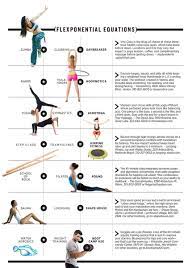
Unlocking Your Potential: Exploring the Best Fitness Regimens for Optimal Health
Fitness Regimens: Finding the Right Routine for You
In today’s fast-paced world, maintaining a healthy lifestyle has become increasingly important. One of the key components of a healthy lifestyle is regular exercise. However, with so many fitness regimens and workout programs available, it can be overwhelming to choose the right one for you. In this article, we will explore some factors to consider when selecting a fitness regimen that suits your needs and goals.
First and foremost, it’s essential to identify your objectives. Are you aiming to lose weight, build muscle, increase flexibility, or simply improve overall fitness? Understanding your goals will help you narrow down the options and find a regimen that aligns with what you want to achieve.
Next, consider your current fitness level. Are you a beginner starting from scratch, or do you have some prior experience with exercise? It’s crucial to choose a regimen that matches your fitness level to avoid injury and maintain motivation. If you’re new to exercise, starting with a beginner-friendly program or seeking guidance from a certified trainer can be beneficial.
Another factor to consider is your personal preferences and interests. Fitness should be enjoyable so that it becomes a sustainable part of your routine. If you dread certain types of exercise or find them boring, chances are you won’t stick with them in the long run. Explore different activities such as yoga, running, weightlifting, cycling, or dance classes until you find something that excites you.
Time availability is also an important consideration. Some regimens require more time commitment than others. If your schedule is already packed with work and other responsibilities, look for programs that offer shorter workouts or flexible training options like home workouts or online classes.
Furthermore, it’s essential to listen to your body and prioritize safety. Pushing yourself too hard or neglecting proper form can lead to injuries that may set back your progress. Always warm up before exercising and cool down afterward. Don’t hesitate to modify exercises or take rest days when needed. Remember, fitness is a journey, and progress takes time.
Lastly, consider seeking professional guidance. Personal trainers or fitness instructors can provide expert advice tailored to your specific needs and goals. They can help design a personalized regimen, monitor your progress, and provide motivation and accountability.
In conclusion, finding the right fitness regimen is a personal journey that requires careful consideration of your goals, fitness level, preferences, time availability, safety, and professional guidance. Remember that what works for someone else may not work for you. Experiment with different activities until you find what you enjoy and what aligns with your aspirations. By adopting a fitness regimen that suits you best, you’ll be on the path to achieving a healthier and happier lifestyle.
A Comprehensive Guide to Fitness Regimens: Answering 4 Common Questions
- What is a good workout regimen?
- What is a fitness regimen?
- What are the 7 fitness styles?
- How do you create a fitness regimen?
What is a good workout regimen?
A good workout regimen is one that is tailored to your specific goals, preferences, and fitness level. While there is no one-size-fits-all approach, here are some fundamental components to consider when designing a well-rounded workout regimen:
- Cardiovascular Exercise: Incorporate activities that elevate your heart rate and improve cardiovascular health. Options include running, cycling, swimming, brisk walking, or participating in aerobic classes. Aim for at least 150 minutes of moderate-intensity cardio exercise per week.
- Strength Training: Include exercises that target major muscle groups to build strength and increase lean muscle mass. This can be achieved through weightlifting, resistance training, or bodyweight exercises like push-ups, squats, and lunges. Aim for two to three days of strength training per week.
- Flexibility and Mobility: Don’t neglect stretching exercises to improve flexibility and joint mobility. Incorporate activities like yoga or dedicated stretching routines into your regimen to enhance range of motion and prevent injuries.
- Core Exercises: Strengthening your core muscles is essential for stability and overall functional fitness. Include exercises like planks, Russian twists, or Pilates moves that engage the abdominal muscles and lower back.
- Rest and Recovery: Allow adequate time for rest and recovery between workouts to avoid overtraining and promote muscle repair. Listen to your body’s signals and take rest days as needed.
- Variety: Keep your workouts interesting by incorporating a variety of exercises and activities. This not only prevents boredom but also challenges different muscle groups while providing a more well-rounded fitness experience.
- Progression: Gradually increase the intensity or duration of your workouts over time to continue challenging yourself and making progress toward your goals.
Remember that individual preferences play a significant role in adherence to a workout regimen. If you enjoy the activities you’re doing, you’ll be more likely to stick with them in the long run. Additionally, consulting with a fitness professional, such as a personal trainer or exercise physiologist, can provide valuable guidance and help you design a regimen that suits your specific needs and goals.
What is a fitness regimen?
A fitness regimen, also known as a fitness routine or exercise program, refers to a structured and planned series of physical activities aimed at improving or maintaining one’s physical fitness. It is a systematic approach to exercise that typically includes a combination of aerobic activities, strength training, flexibility exercises, and sometimes specific sports or recreational activities.
A fitness regimen is designed to address individual goals and objectives, such as weight loss, muscle building, cardiovascular endurance, flexibility enhancement, or overall improvement in physical health and well-being. It provides a framework for organizing and scheduling workouts to ensure consistency and progress over time.
A typical fitness regimen may involve various components:
- Aerobic Exercise: This includes activities that elevate the heart rate and increase cardiovascular endurance. Examples include running, cycling, swimming, dancing, or participating in group fitness classes like aerobics or Zumba.
- Strength Training: This focuses on building muscular strength and endurance through resistance exercises using weights (dumbbells, barbells), resistance bands, bodyweight exercises (push-ups, squats), or weight machines at the gym.
- Flexibility Training: Stretching exercises aimed at improving joint range of motion and preventing muscle tightness. Yoga or Pilates classes are often incorporated into fitness regimens for flexibility enhancement.
- Rest and Recovery: Adequate rest days are essential for the body to recover from intense workouts and prevent overtraining injuries. Rest allows muscles to repair and adapt to the stress of exercise.
Fitness regimens can be tailored to suit different individuals based on their fitness levels, preferences, time availability, and specific goals. They can be self-designed by individuals who have knowledge about exercise principles or developed with the help of personal trainers or fitness professionals who provide guidance based on their expertise.
The ultimate aim of a fitness regimen is to promote overall health by improving cardiovascular function, building strength and muscle tone, enhancing flexibility and mobility while reducing the risk of chronic diseases associated with a sedentary lifestyle. It is important to note that a fitness regimen should be personalized and gradually progressed to avoid injury and accommodate individual capabilities and limitations.
What are the 7 fitness styles?
There are various fitness styles or types of exercise that cater to different goals and preferences. While there isn’t a definitive list of universally recognized fitness styles, here are seven common ones:
- Cardiovascular Training: This style focuses on exercises that elevate the heart rate and improve cardiovascular health. Activities like running, cycling, swimming, and aerobic classes fall into this category.
- Strength Training: Strength training involves exercises that target specific muscle groups to build strength, increase muscle mass, and improve overall body composition. It often includes weightlifting, resistance training, bodyweight exercises, and using machines or free weights.
- High-Intensity Interval Training (HIIT): HIIT workouts involve short bursts of intense exercise followed by brief recovery periods. These workouts are designed to maximize calorie burn, boost cardiovascular fitness, and improve endurance in a shorter amount of time.
- Flexibility and Mobility Training: This type of training focuses on improving flexibility, joint mobility, and range of motion. Examples include yoga, Pilates, stretching routines, and mobility drills.
- Functional Training: Functional training aims to improve movement patterns and strength for everyday activities or sports performance. It often involves exercises that mimic real-life movements such as squats, lunges, push-ups, and core stability exercises.
- Mind-Body Practices: These practices combine physical movement with mental focus to enhance overall well-being. Yoga, tai chi, meditation-based workouts like Qigong or mindfulness-based exercises fall under this category.
- Group Fitness Classes: Group fitness classes offer a variety of workout styles led by an instructor in a group setting. Classes such as Zumba (dance-based), spinning (indoor cycling), kickboxing (martial arts-inspired), or boot camps (a mix of cardio and strength) provide structured workouts with a social component.
It’s important to note that these categories are not mutually exclusive; many fitness routines incorporate elements from multiple styles. It’s beneficial to explore different styles and find a combination that suits your goals, preferences, and overall fitness needs.
How do you create a fitness regimen?
Creating a fitness regimen that suits your needs and goals requires careful planning and consideration. Here are some steps to help you create an effective fitness regimen:
- Set Clear Goals: Determine what you want to achieve through your fitness regimen. Whether it’s weight loss, muscle gain, improved endurance, or overall fitness, having clear goals will guide your workout choices.
- Assess Your Current Fitness Level: Evaluate your current fitness level honestly. Consider factors like cardiovascular endurance, strength, flexibility, and balance. This assessment will help you determine where you need to focus your efforts.
- Choose the Right Activities: Select exercises and activities that align with your goals and preferences. Consider a combination of cardiovascular exercises (such as running, swimming, cycling) for endurance, strength training (using weights or bodyweight exercises) for muscle development, and flexibility exercises (like yoga or stretching) for improved mobility.
- Plan Your Workout Schedule: Determine how many days per week you can commit to exercise. It’s generally recommended to aim for at least 150 minutes of moderate-intensity aerobic activity or 75 minutes of vigorous-intensity aerobic activity each week along with strength training exercises at least twice a week.
- Structure Your Workouts: Divide your weekly workout schedule into different sessions focusing on different areas of fitness (e.g., cardio on certain days, strength training on others). Include warm-up exercises at the beginning of each session and cool-down stretches at the end to prevent injuries and aid recovery.
- Gradually Increase Intensity: Start with manageable intensity levels and gradually increase the challenge as your fitness improves. Progression is key to avoid plateaus and keep challenging your body.
- Include Rest Days: Allow for adequate rest and recovery between workouts. Rest days are essential for muscle repair and growth while reducing the risk of overuse injuries.
- Monitor Your Progress: Keep track of your workouts, noting the exercises performed, sets, reps, and weights used. Monitoring your progress will help you see improvements over time and make necessary adjustments to your regimen.
- Stay Motivated: Find ways to stay motivated and accountable. This could include working out with a friend, joining group fitness classes, using fitness apps or wearable devices to track progress, or hiring a personal trainer for guidance and support.
- Adapt as Needed: Be flexible and willing to adjust your regimen as circumstances change or as you achieve your goals. Reassess your goals periodically and modify your workouts accordingly.
Remember, it’s always advisable to consult with a healthcare professional or certified fitness trainer before starting any new exercise program, especially if you have any underlying health conditions or concerns. They can provide personalized guidance based on your specific needs.

